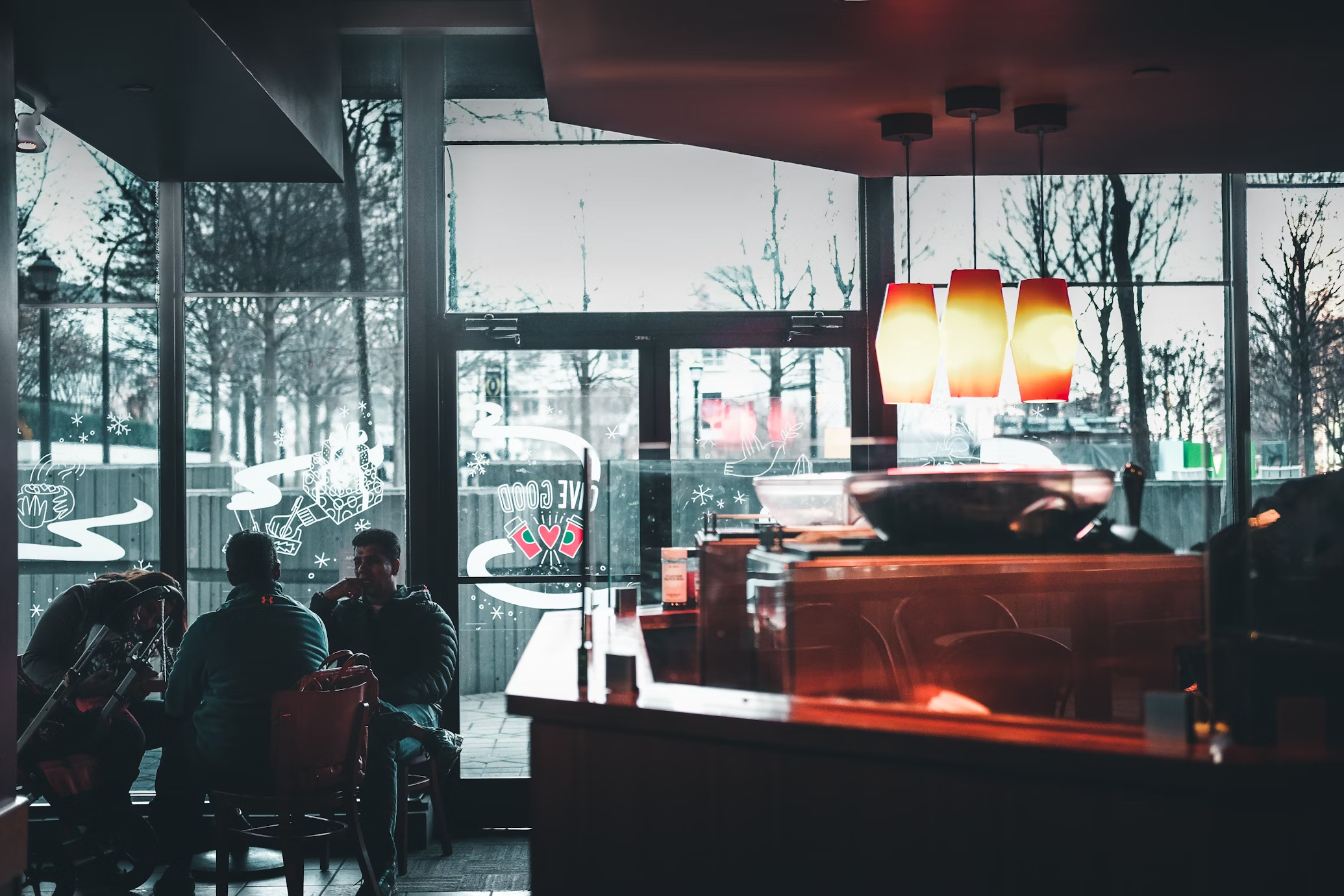In the competitive landscape of the restaurant market, findind out hidden opportunities in your restaurant is game changing, maximizing revenue is paramount for success, but what about the hidden profitability metrics that go unnoticed by even the most experienced restauranteurs? Paperchase has decades of insight into hospitality, showing just how much the numbers can reveal. To dive beyond COGS and labor percentage we turned to our most senior experts – Paperchase founder Aku Patel and our CEO Nish Patel – who have over 60 years of restaurant finance knowledge. Understanding the numeric minutia is an acquired skill that Paperchase is fluent in. We’re pulling the curtain back on the areas our experts say are often overlooked but critical to restaurant success from incorrectly logged inventory to proper BOH training.
Increasing your Top Line
Dissect Average Check
All restauranteurs understand and evaluate the average check in their business, but untapped areas like staff training reveal room for improvement. Paperchase’s expert team goes line by line in this realm to reveal specific hidden metrics preventing your business from boosting revenue. Training your staff to sell within each category will differ depending on your concept. For example, an Italian restaurant should sell more wine with their food. Paperchase’s CEO Nish Patel claims “If your business is big on wine, you should be constantly prioritizing it. Wine should always move off the shelves so your sommelier can introduce new bottles regularly.” If your business sells more cocktails, look at your previous average spend in this category. Nish’s expertise in the industry also revealed that the average guest should order 1.5 cocktails on a Friday and Saturday night and there might be room for improvement if your bars aren’t hitting this number. Consider a competition between servers to encourage upselling. Work with different vendors each month to push your staff to sell a specific product with an incentive for the highest seller.
Profitability by Revenue Center and Cost Per Sq Footage
Comfort and ambiance are key elements affecting the average check that owners and managers leave unnoticed. Although it may be more money upfront, purchasing thoughtful furniture and decorations are important investments into the future revenue of your business. If the seating in your lounge or bar is uncomfortable, guests may be less inclined to order a second cocktail or spend on top of what they are already buying. The design of your restaurant is crucial. Paperchase’s hospitality experts recommend analyzing your cost per square foot. What part of the restaurant are you selling more alcohol? If you have different revenue centers, like multiple bars or a lounge, you should always meticulously monitor these areas for fluctuations in sales. A restaurant owner or operator should continuously look at their data to spot evolutions in revenue. Cost per square foot can reveal the parts of your restaurant that are not as successful, whether it is staff training, layout, aesthetics, or even the music. The good news for restaurant owners is that all of these are malleable standards that are controlled with the right time and guidance. Working with restaurant finance experts like Paperchase gives business owners the ability to capitalize on the resources available at their fingertips.
Hidden Costs in Your Restaurant
The Secret to Consistent Inventory
Wastage and mismanaged portions, often overlooked, deflate your revenue month over month. A successful restaurant operates within margins that are controlled every week. Paperchase founder Aku Patel stresses the importance of having a strong discipline with your inventory. Each area of the restaurant should be routinely monitored to stay current with COGS and ensure you are not losing money. For example, keeping a strong watch over your bar inventory allows managers and operators to spot items that are not being sold efficiently. Is your bar staff giving away too many free drinks? Regarding this, Aku says: “When it comes to comps and voids, make sure nothing goes without requisition. The only way to catch this is through inventory and discipline.” Similarly, incorrectly labeled food inventory can eat at your costs. Emphasize portion control in your business so you don’t lose money with every dish served. Consistency in this area can prevent wastage and loss of ingredients. Storage of inventory is crucial, make sure your fruit, meat, and other perishables are correctly stored so they can last multiple days in the case that there is not a delivery, like over the weekend. Another way to regulate this is to look for portion creep, specifically with your proteins. These ingredients should be correctly portioned according to recipe costing. Ensure your portions are not cannibalizing the opportunity for more selling by watching what dishes return to the kitchen unfished. Paperchase witnessed one of their clients selling inconsistent portions of fish, resulting in higher food costs. If you are a business that sells items in bulk, consider how your packaging can help you save money. Adding more of a high-selling product to a package can save costs on materials and push more products. Lastly, with inventory checks, always monitor for theft weekly to keep unwatched products from costing you greatly.
Auxiliary Costs
Upkeep of equipment, linen & laundry, and incorrectly stored materials are all hidden costs in your restaurant that put a strain on your bottom line. These metrics often go unnoticed, but with the help of Paperchase’s hospitality finance experts, you can spot these sensitive areas before they cost your business. One of the biggest expenses in a restaurant is linen and laundry costs. The number of napkins you use should be compared to the number of covers without going over. A surfeit of laundry is a costly endeavor that takes away from boosting revenue. The same goes for wash per plate and so on. Operators that fail to maximize their supplies cost their restaurants thousands each year. The costs in your restaurant should match the traffic coming in without exceeding this limit. There are also hidden costs in the layout of your restaurant. For example, if you store glassware in a high-trafficked and tight corner, there is room for significant breakage. Aku Patel recalls seeing a restaurant spending over $700 a week on broken glasses because they were not properly stored. Additionally, ensure processes are meticulously followed in the kitchen so that equipment is used properly to prevent damage and inventory is not wasted. Aku Patel gives the example of a dishwasher using too much soap when washing dishes. Although it seems small, these little costs can add up. Train your BOH staff to clean equipment thoroughly and correctly so it has longevity. Complete regular checks of your A.C. unit and other machinery around the establishment to confirm it is working properly and not ballooning your expenses. A critical piece of advice from Aku Patel is to “keep your restaurant in good shape. It is extremely costly to replace your floors or windows when they are not maintained with care.” It may seem like an impossible feat to keep such a meticulous watch over your business, but Paperchase’s restaurant experts have the foresight and reporting to put out a fire before it becomes an expensive problem.
Costly Complimentary Items
Paperchase’s CEO Nish Patel is intimately involved in supporting his clients. He recalls a specific scenario when a restaurant was ballooning expenses in an area they did not account for. As he began diving into this client’s costs via in-depth analytics reports, Nish discovered that their food costs were exceptionally high, hitting 33% for the cost of goods sold. He arranged meetings with the head chefs to investigate what was causing such abnormally high food costs and found out that GMs of the business were regularly providing free cheese and olive plates to clients without logging them in the restaurant’s POS system or any other paper trail. True to Paperchase’s name, Nish worked with the head chefs to develop a policy for handwritten documentation of each instance of comped olives and cheeses to clients at the restaurant, along with more robust control processes related to food purchases from their vendors. As a result of these collaborations, the client realized multiple large savings, including a 6% reduction in vendor costs for food, and a reduction in costs of goods sold related to food to the tune of $5MM.
Hidden Costs in Your Reservations
Another scenario Paperchase encountered was where public interest in a client and the number of reservations weren’t aligned. Paperchase’s hospitality finance experts analyzed the number of dropped and missed calls to see if there were opportunities for the restaurant to be missing. We found that there was the highest volume of calls between 3:30 and 4 PM. Hostesses weren’t at the stand during that half hour because the chef strictly served family meals at that time every day. Paperchase suggested they stagger family meals, resulting in an increase of around $2k per night in additional reservations. A crucial piece of advice from this example is to work with your Maître d to look at average covers per night and promote a 2.2x turnover rate for tables.
Take Control of your Restaurant’s Future with Paperchase
Successfully increasing revenue in a restaurant requires a holistic approach from a hospitality accountancy that understands the nuances of this complex industry. From optimizing average check through thoughtful restaurant design and staff training to identifying and mitigating hidden costs in inventory and operations, restaurateurs can significantly impact their bottom line when partnering with a team that has their back financially. Implementing strategies outlined in this analysis and seeking expert guidance empowers restaurant owners to create a sustainable and
profitable business that thrives in today’s competitive market. Want to get in touch with an expert? Visit paperchase.ac to learn more about Paperchase’s comprehensive financial services and talk to one of our seasoned professionals about the future of your business.
Read more


